“It’s the most money I’ve ever paid for a guitar in my life: over $400,000. But what’s a Flying V worth? It’s worth what someone’s willing to pay for it”: Joe Bonamassa opens the gates to Nerdville and shows off the most prized guitars in his collection
Bonamassa welcomes us to Nerdville to share the stories behind some of his favorite guitars, including a mint ’58 Flying V, Tommy Bolin’s mythical 1960 Gibson Les Paul Standard and a tuxedo ES-355 that might, just might, be the only one in existence
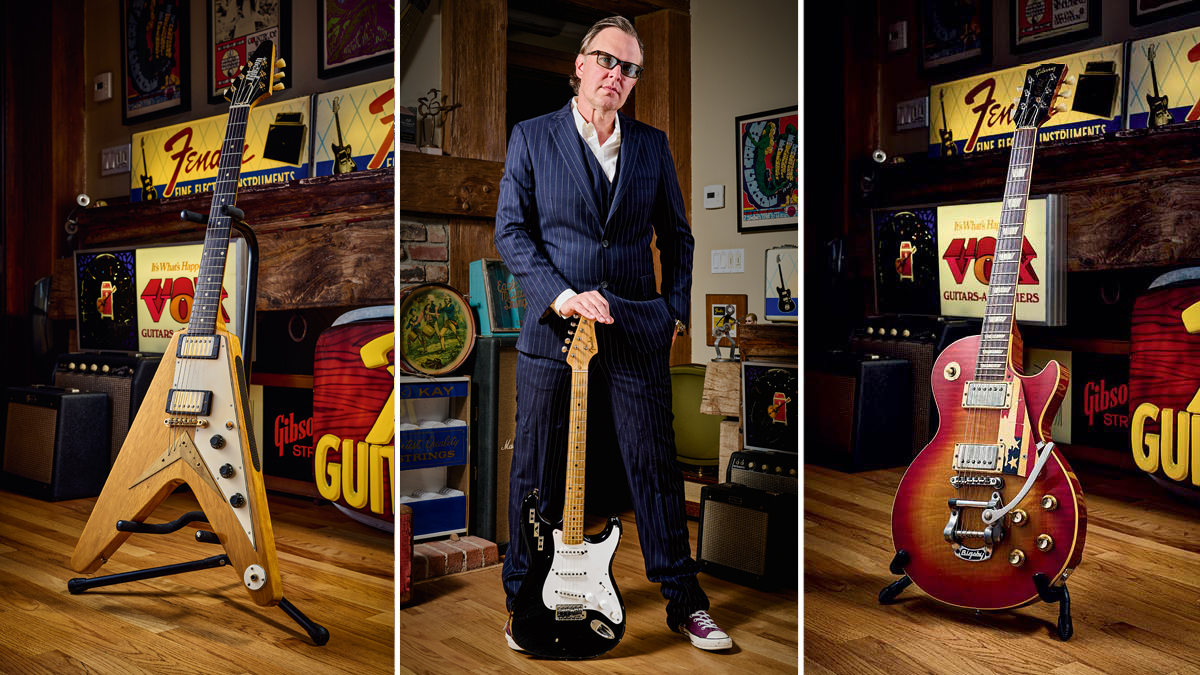
If we’re talking vintage guitar, Joe Bonamassa has one of the finest collections on the planet, so when an invite was extended to Guitarist that we should visit the Mayor of Nerdville’s HQ at Laurel Canyon, there was no way we were going to refuse.
It was an interview. Bonamassa has a new album out now. During our visit, Bonamassa discussed a remarkable career at the coal face of blues guitar, why he had to record release a sequel to the album that saved his career, Blues Deluxe Vol. 2, and why he plans to go out at the top.
But it was also a pilgrimage, the tour of a lifetime, and a occasion to peek behind the curtain and get up close and personal with some of the rarest instruments on the planet, with Bonamassa as our guide.
Ex-Tommy Bolin – 1960 Gibson Les Paul Standard
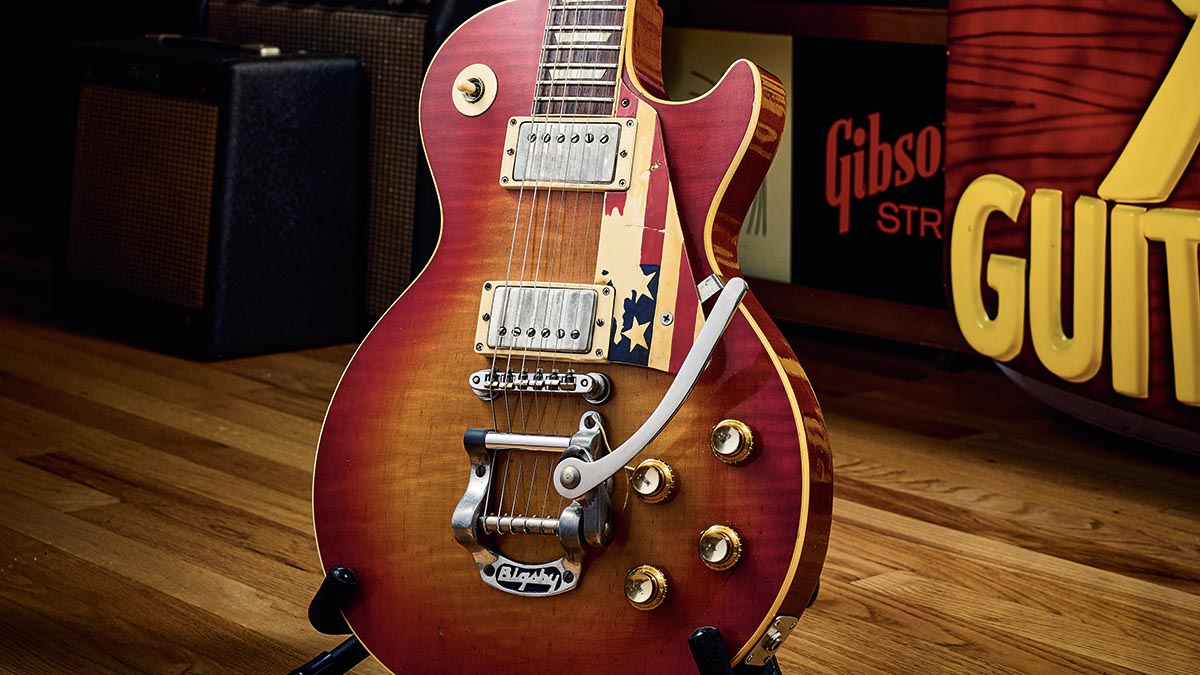
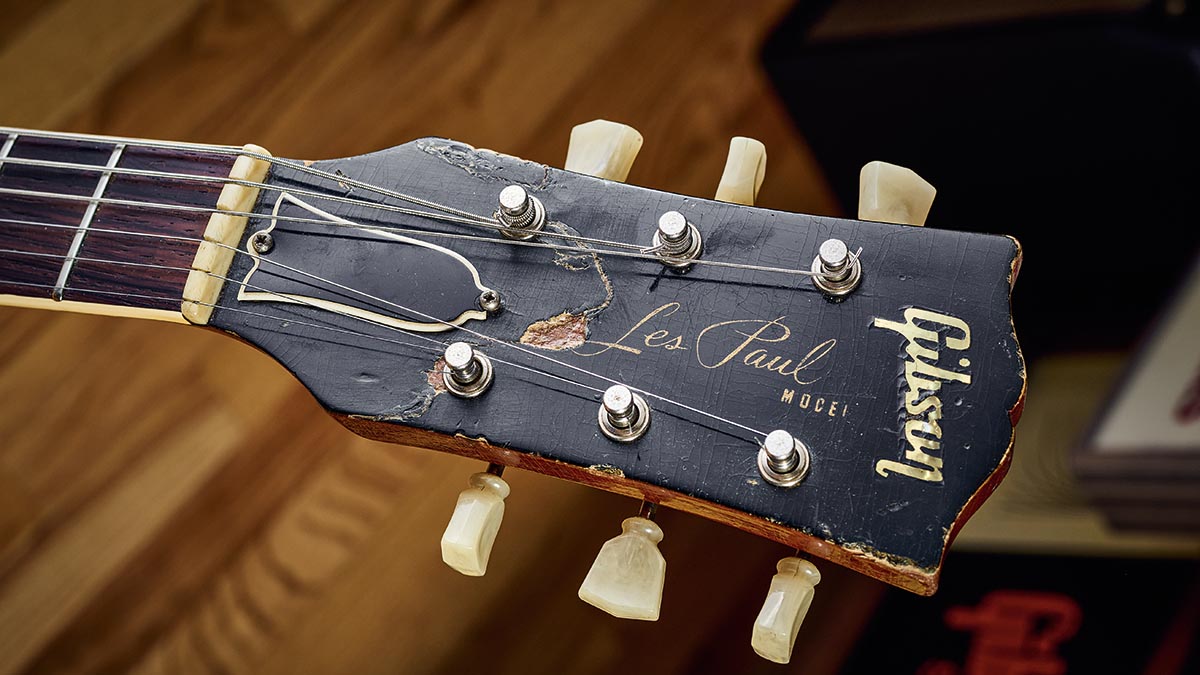
Serial Number: 0 7458
“Tommy Bolin never owned this guitar. That’s the misconception. It was owned by a guy named David Brown who bought it in 1966 for $125 in Denver. His daughter actually sent me the receipt. When Tommy’s Goldtop got nicked in the early ’70s when he was with Zephyr, David was Tommy’s right-hand man and he loaned him this ’Burst. And so Tommy played it all through Zephyr and Deep Purple.
“He didn’t use it on [the Billy Cobham album] Spectrum, where he used a Strat. They put the vibrato on it because Tommy was a Strat guy. I looked for this guitar for about a decade and finally located David in Moab, Utah.
“I made a deal with him, paid him in cash, and he died two months later in a car accident. His last text to his daughter was, ‘I buried the money in the desert.’ Weird, weird story. It was also the strangest guitar deal I ever did.”
Get The Pick Newsletter
All the latest guitar news, interviews, lessons, reviews, deals and more, direct to your inbox!
‘The Blackburst’ 1960 Gibson Les Paul Standard
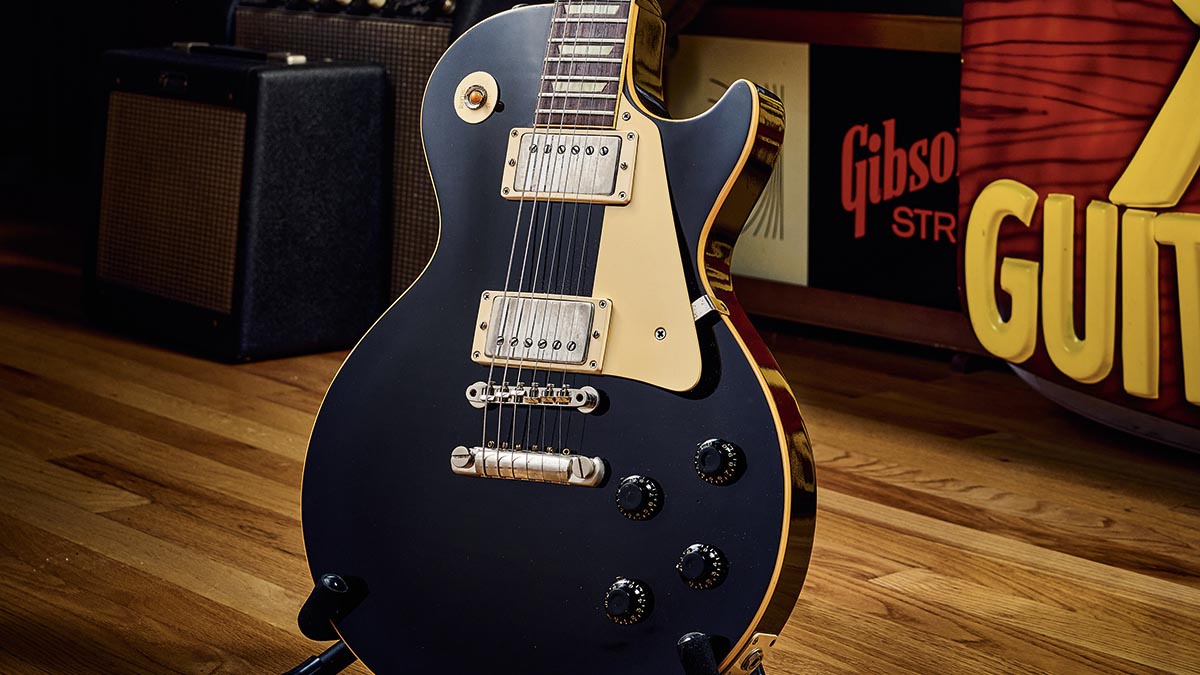
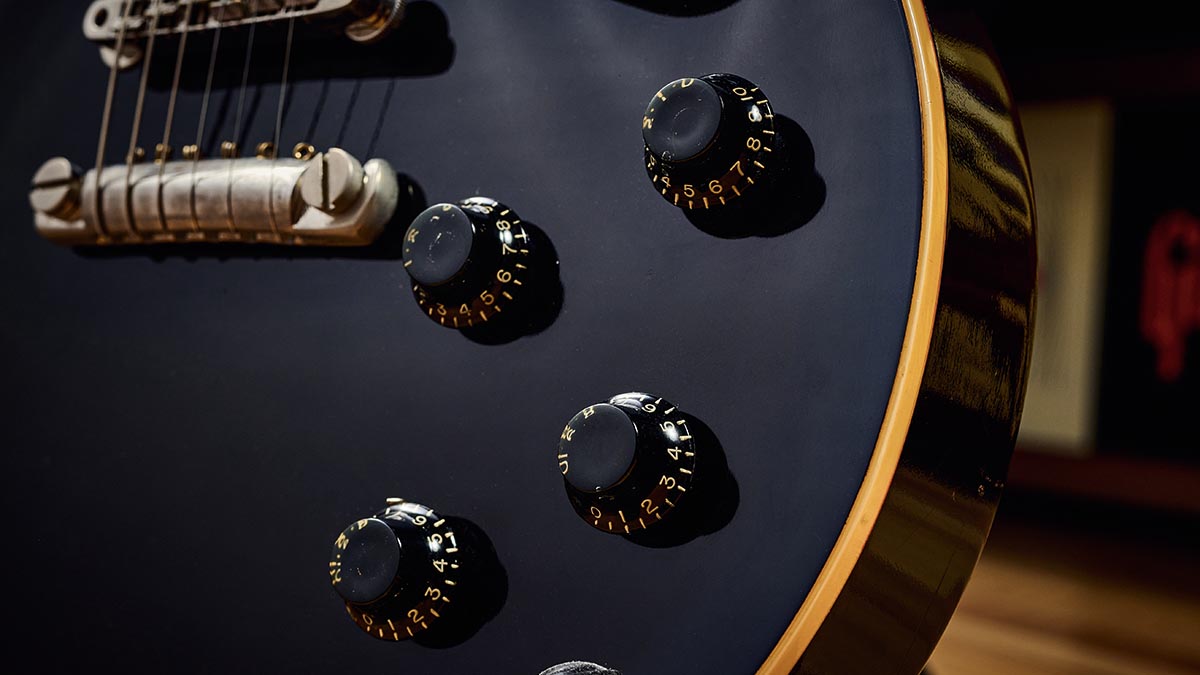
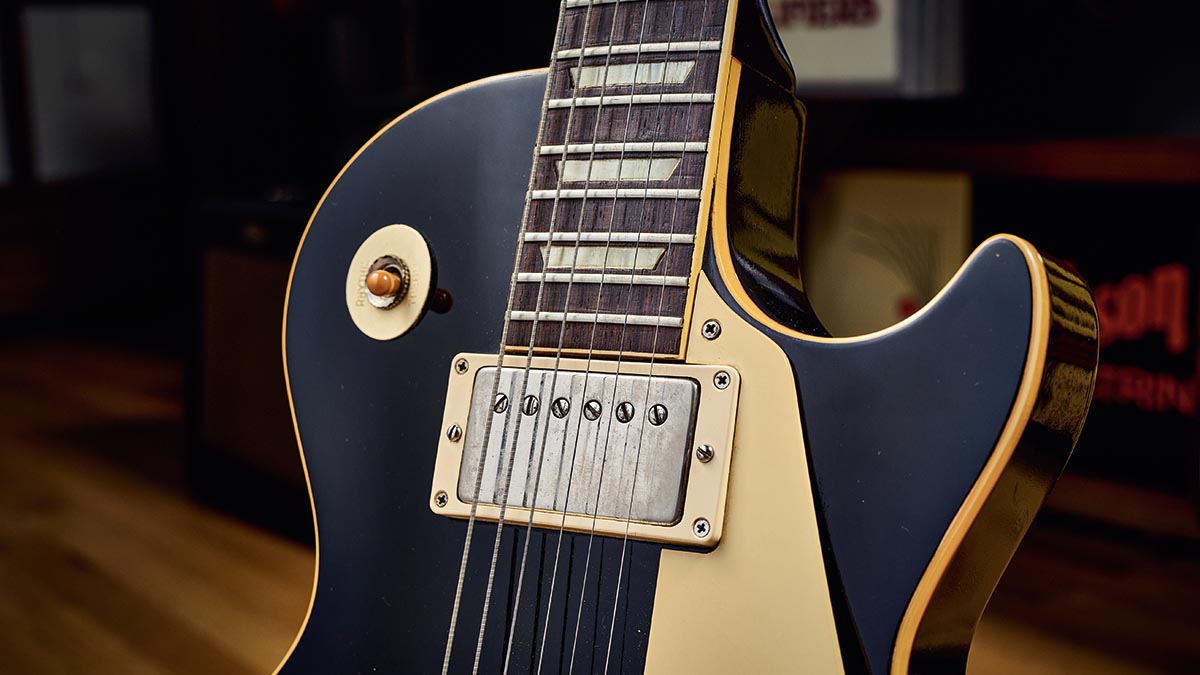
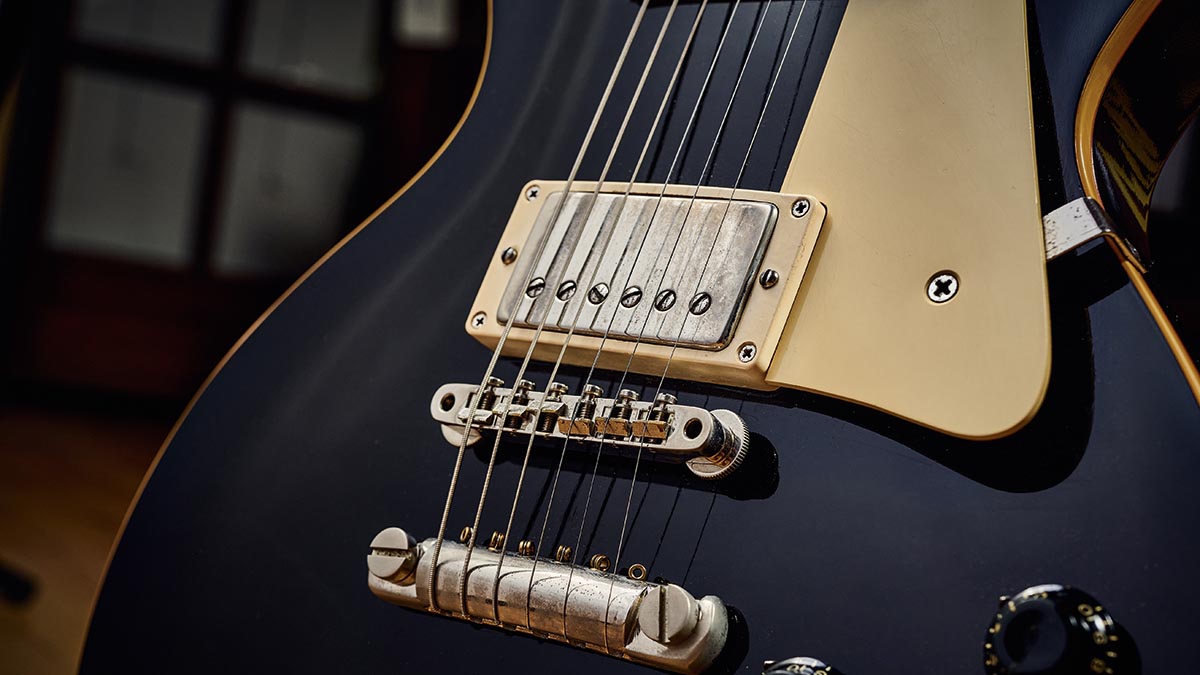
Serial Number 0 0162
“The gentleman who originally ordered this wanted a black guitar, but he couldn’t afford a [$395 Les Paul] Custom. A [Les Paul] Standard was $265, plus the [$42.50] Lifton Faultless case. So Gibson painted him a Standard black. They just took a very flame-y Sunburst guitar, painted over it, and shipped it to him.
“He couldn’t afford the Faultless case, either, so he got an Alligator case with it. It was discovered in 2002 in a retirement home. It had had one owner before me, and I bought it in 2012. As far as the Les Pauls go, it’s the most valuable one I own.
“It never comes out. It is called The Blackburst. There was some confusion earlier this year I had to straighten out, but it is the one, the only, The Blackburst. It’s a 1960, but it’s got the big neck, not the skinny one that came in later. It’s essentially a ’59 [in terms of specs].”
1961 Gibson ES-355TDSV in Telecaster ‘Tuxedo’ finish
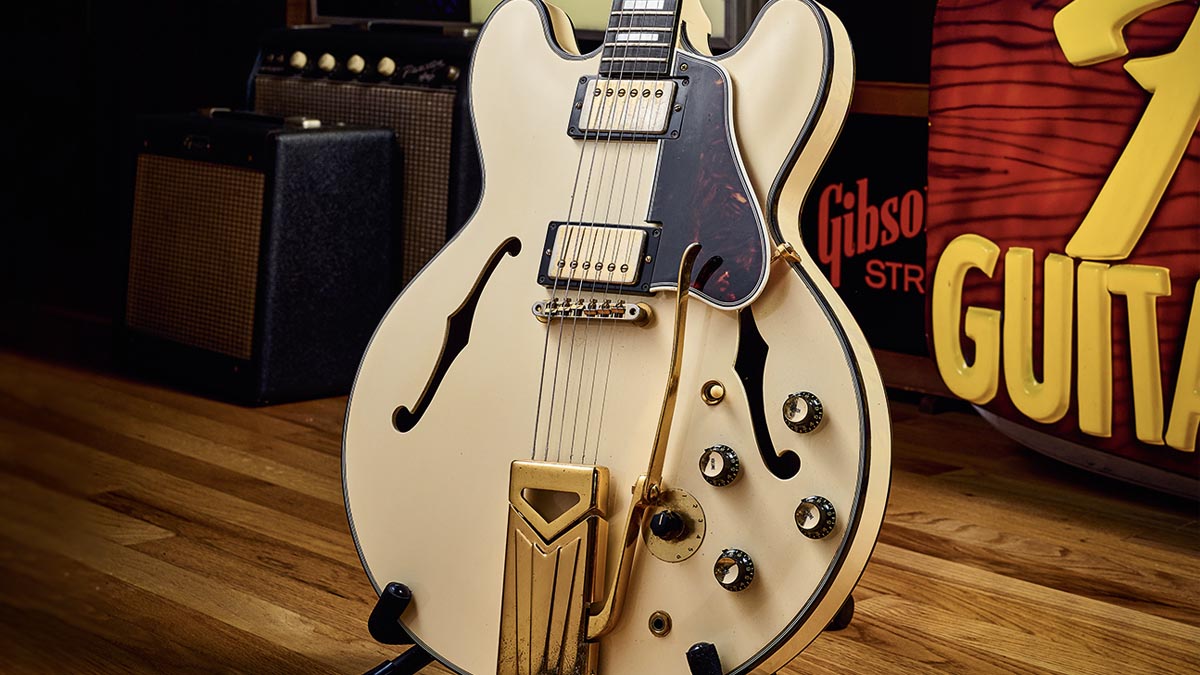
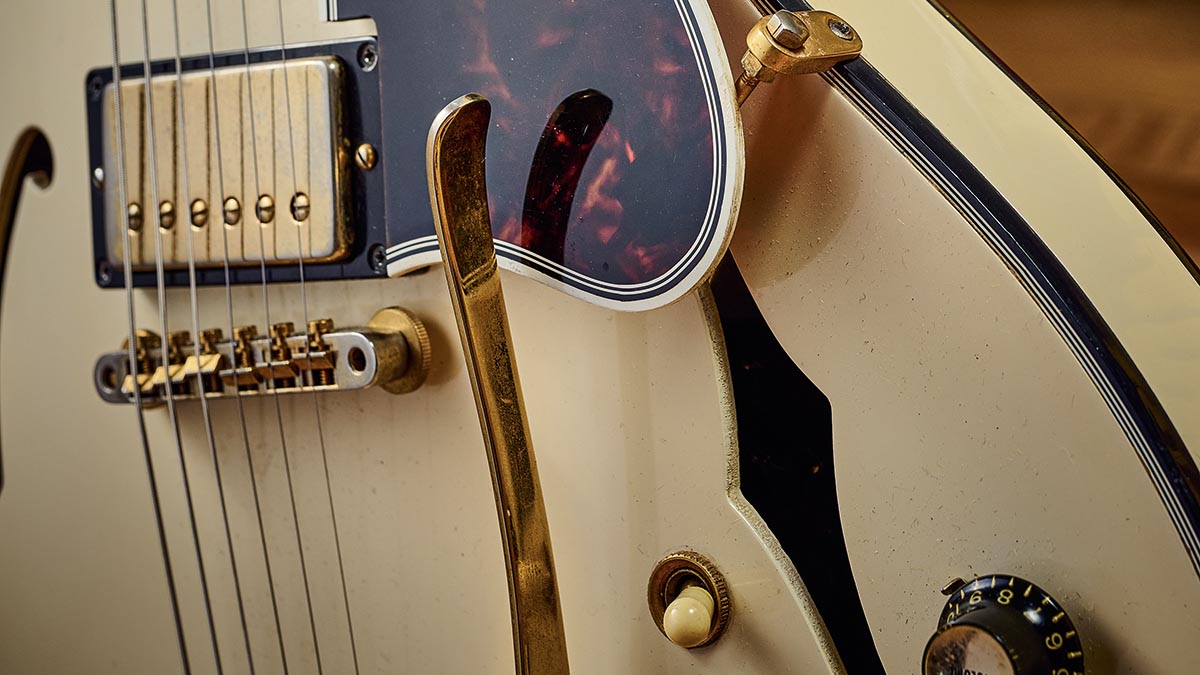
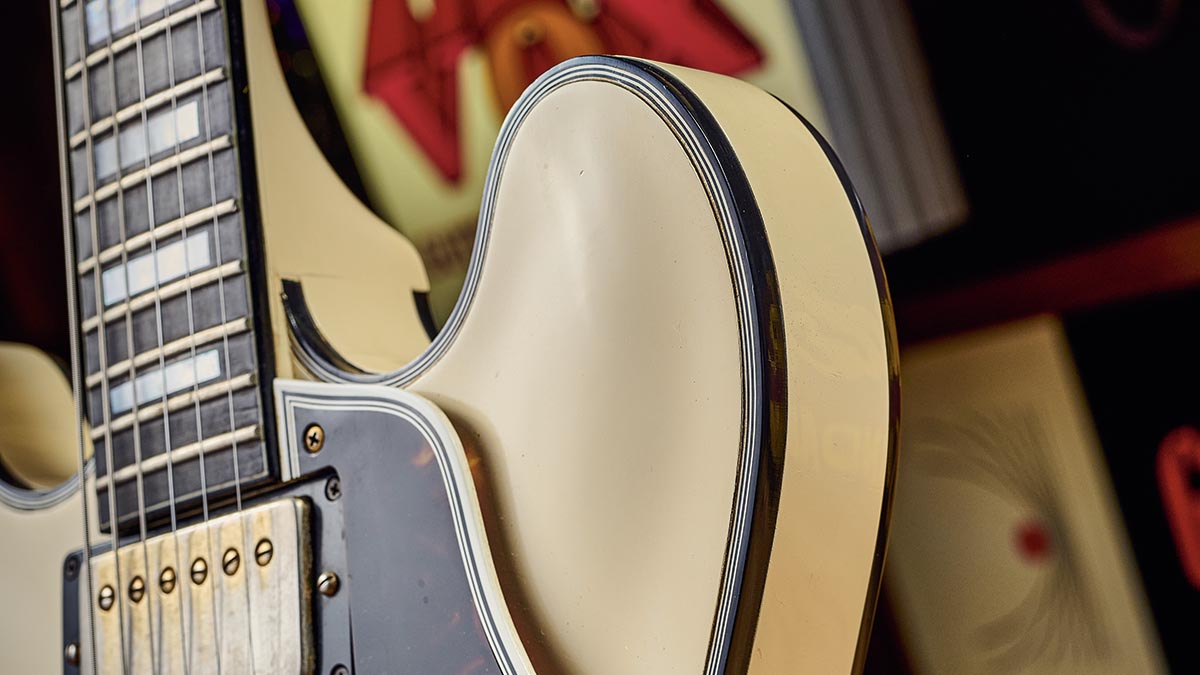
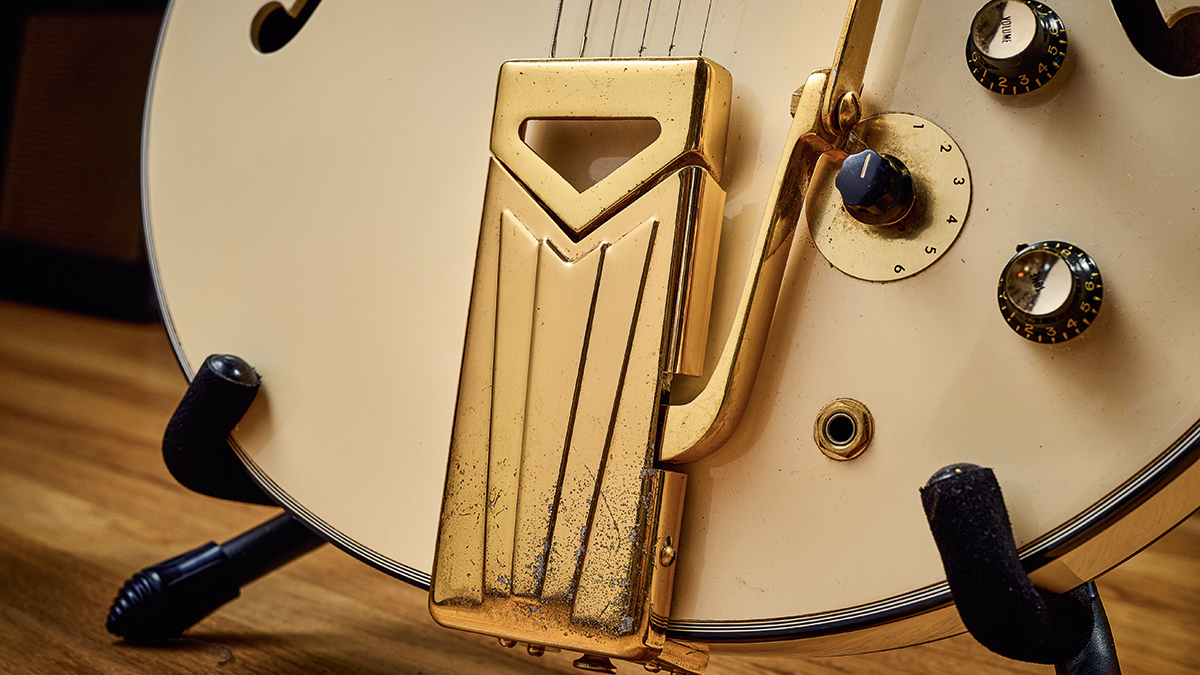
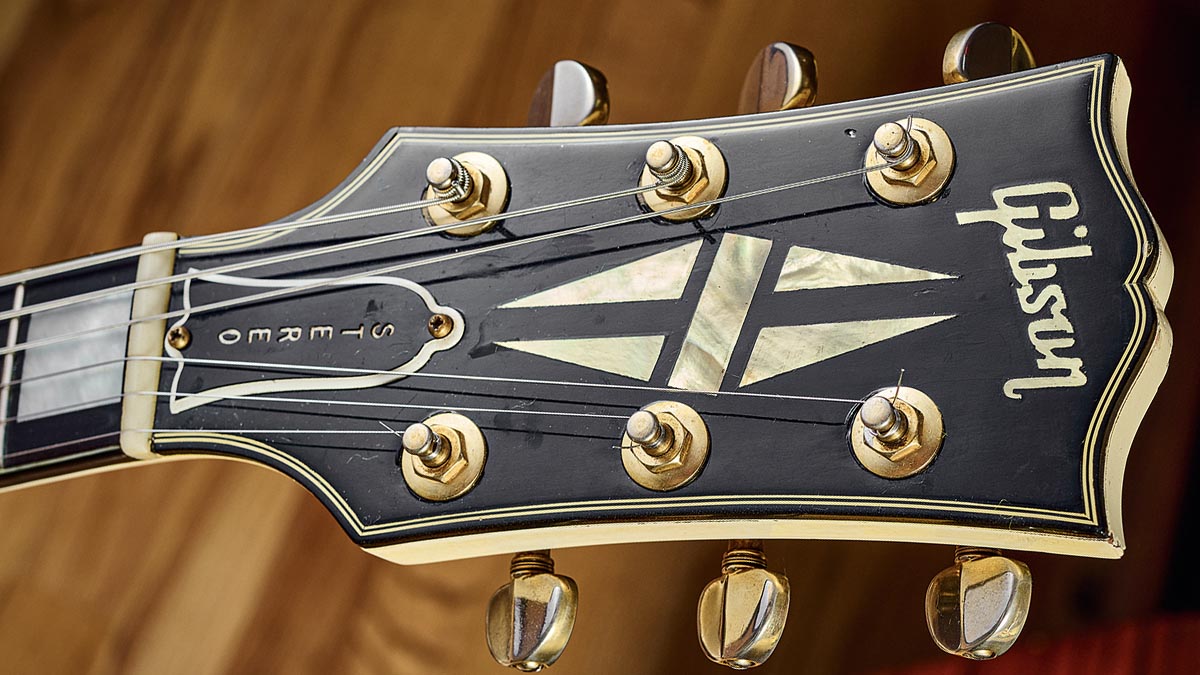
Serial Number: 25409
“The tuxedo ES-355 is a unicorn. Never say never, but we think it might be the only one. It’s from 1961 and has a Polaris White finish with black binding, hence ‘tuxedo’. If there’s another one, I haven’t seen it.
“I’m surprised they didn’t do more because aesthetically it’s so cool. The black binding on the neck almost makes it look like it’s not bound at all – it kind of marries into the ebony.
“I bought it from David Davidson [of Well Strung Guitars]. I remember seeing that guitar in the [Songbirds] museum and made a note it was one of the coolest I’ve seen. When he turned the museum into a shop, this was one of the few things I went after.
“I also have a tuxedo Custom Telecaster in white with black binding. Oddly enough, you see a lot of them in Australia. Mine’s a rosewood neck, but I’ve seen more maple-neck tuxedos. It’s a really cool look.”
‘Donny J’ 1958 Gibson Flying V
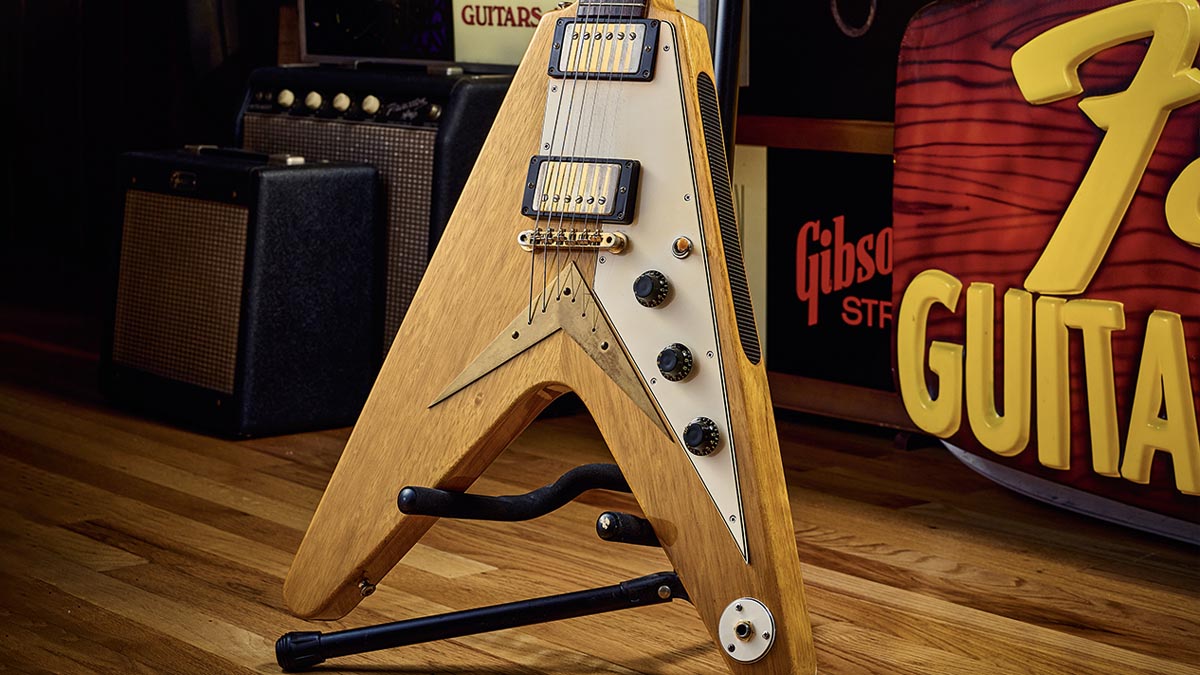
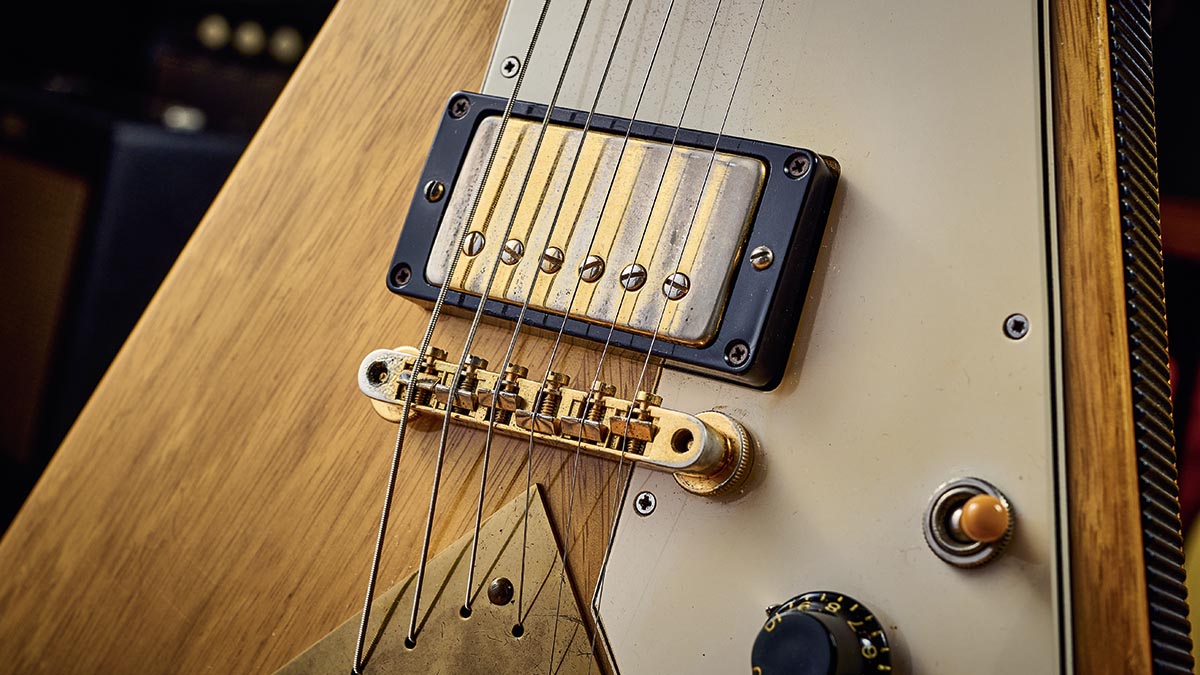
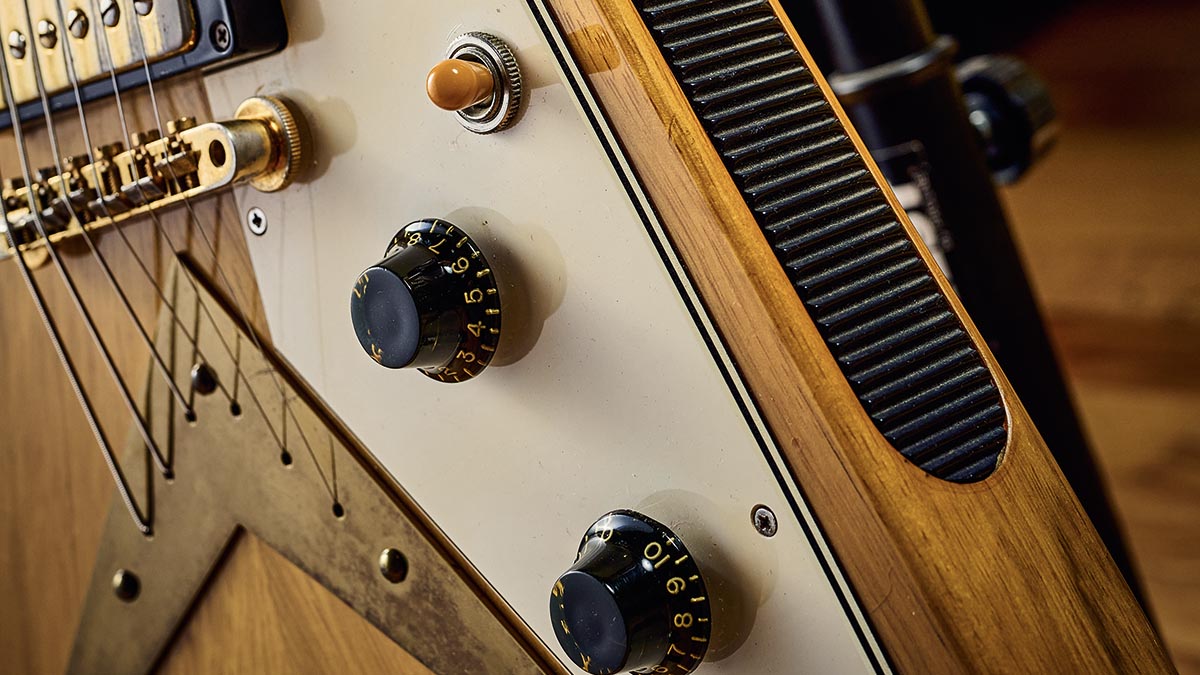
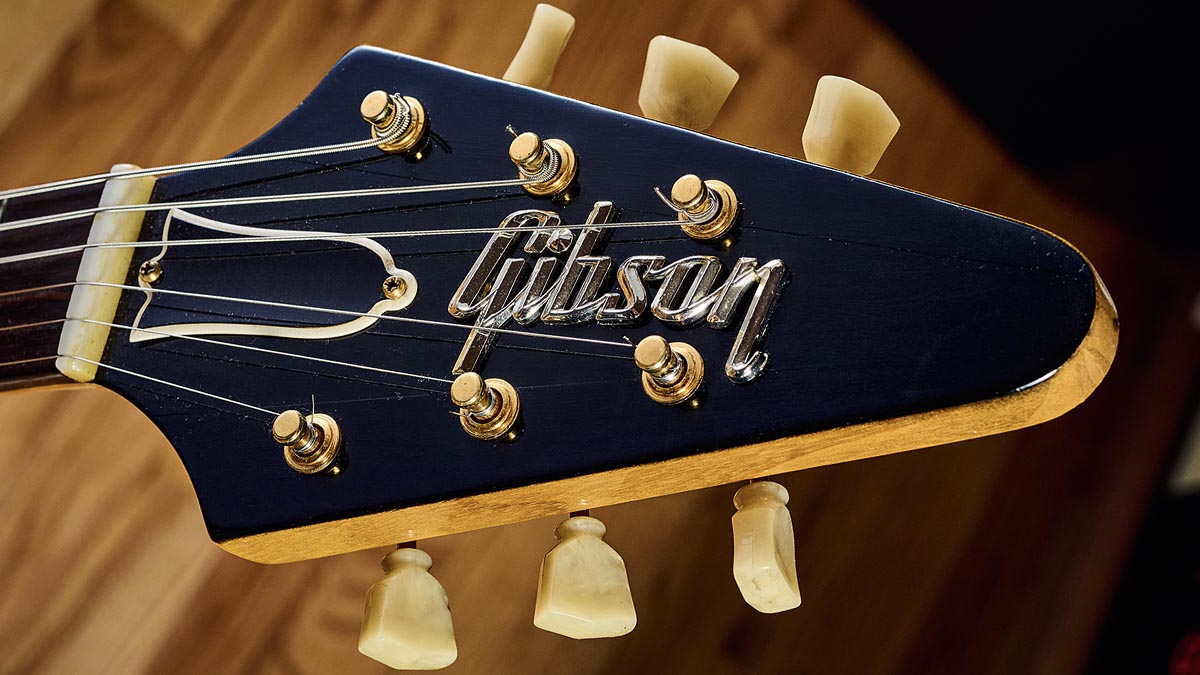
Serial Number: 8 3709
“This is a mint-condition ’58 Flying V I call Donny J. I got it from my friend Don in Oklahoma. He bought it in 1976 for $1,100, which was a lot of money. It belonged to a preacher outside of Oklahoma City. I always thought it would be an odd sight going to church and seeing your pastor rocking a Flying V.
“All my korinas have provenance going back to day one, pretty much. This one’s mint and is the cleanest I’ve ever seen – although, allegedly, there’s one in New Hampshire that’s just as clean. It also has a mint case. When I made the deal with Don I said, ‘Don, in 1976, it wasn’t cheap. And it’s not cheap in 2019, either.’
“He goes, ‘No. It isn’t.’ In fact, it’s the most money I’ve ever paid for a guitar in my life: over $400,000. But what’s a Flying V worth? It’s worth what someone’s willing to pay for it.”
Ex-Howard Reed 1955 Fender Stratocaster in black finish
Serial Number: 10041
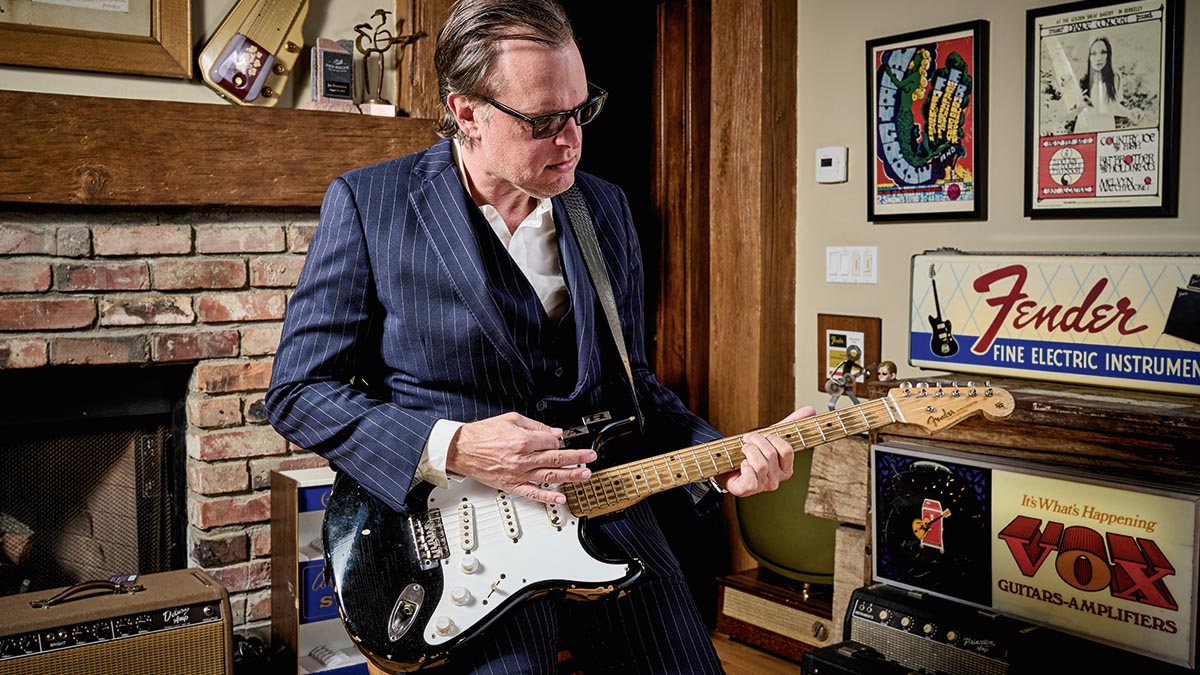
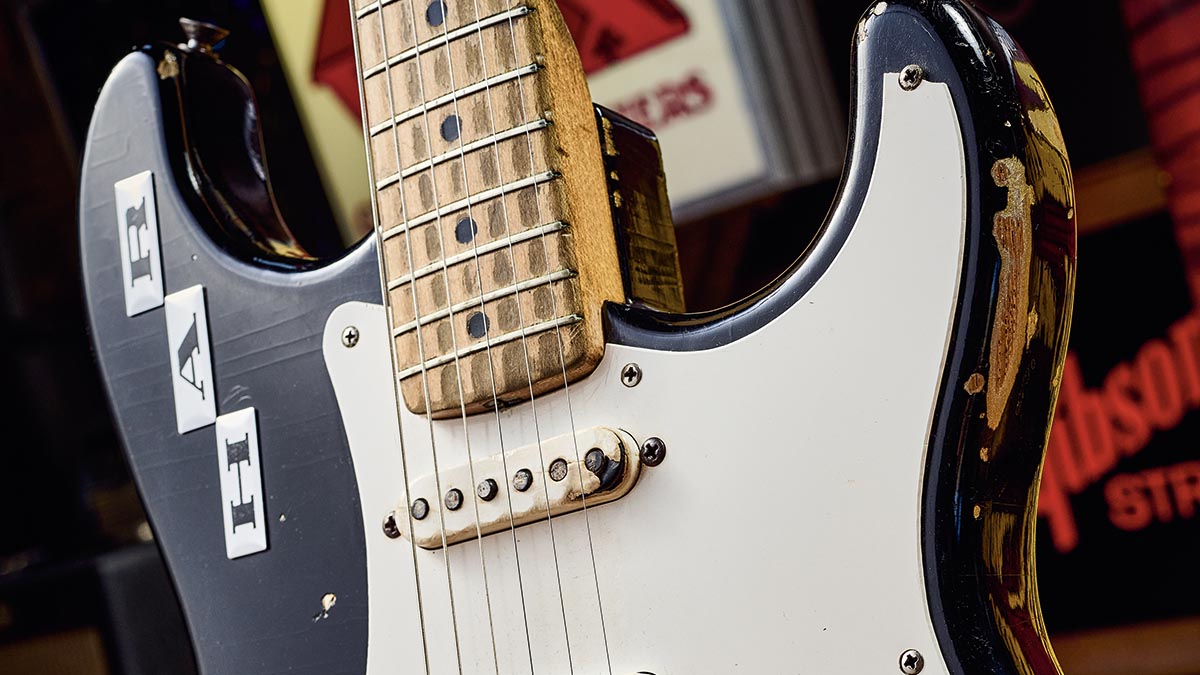
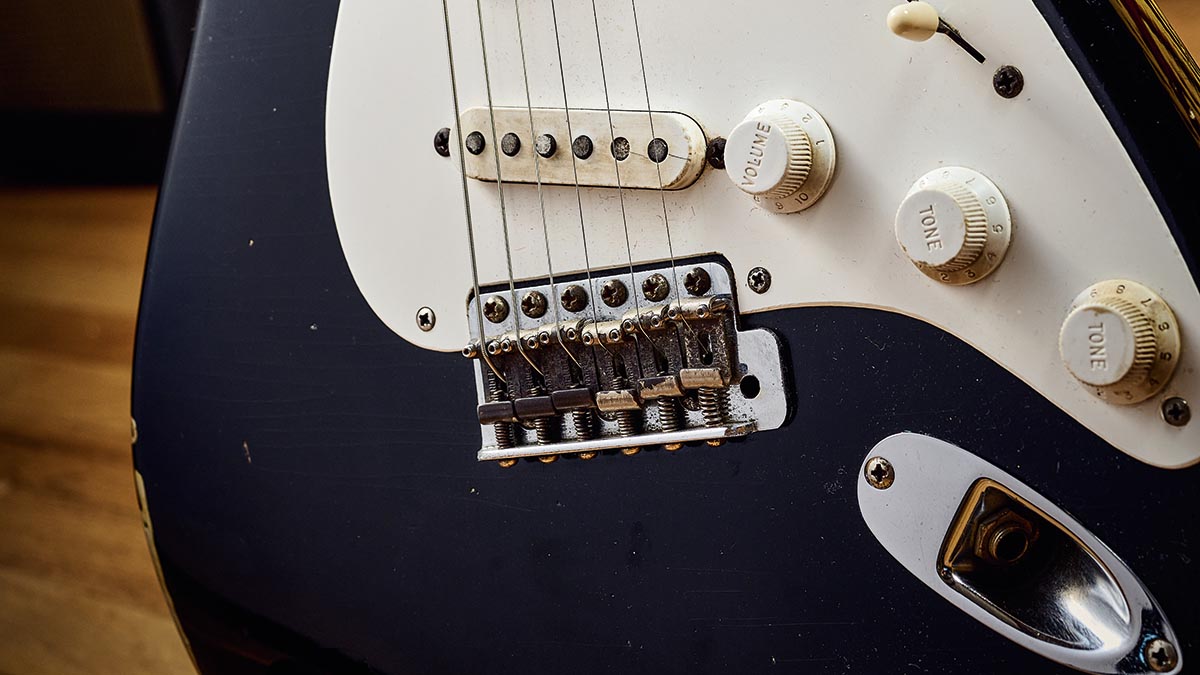
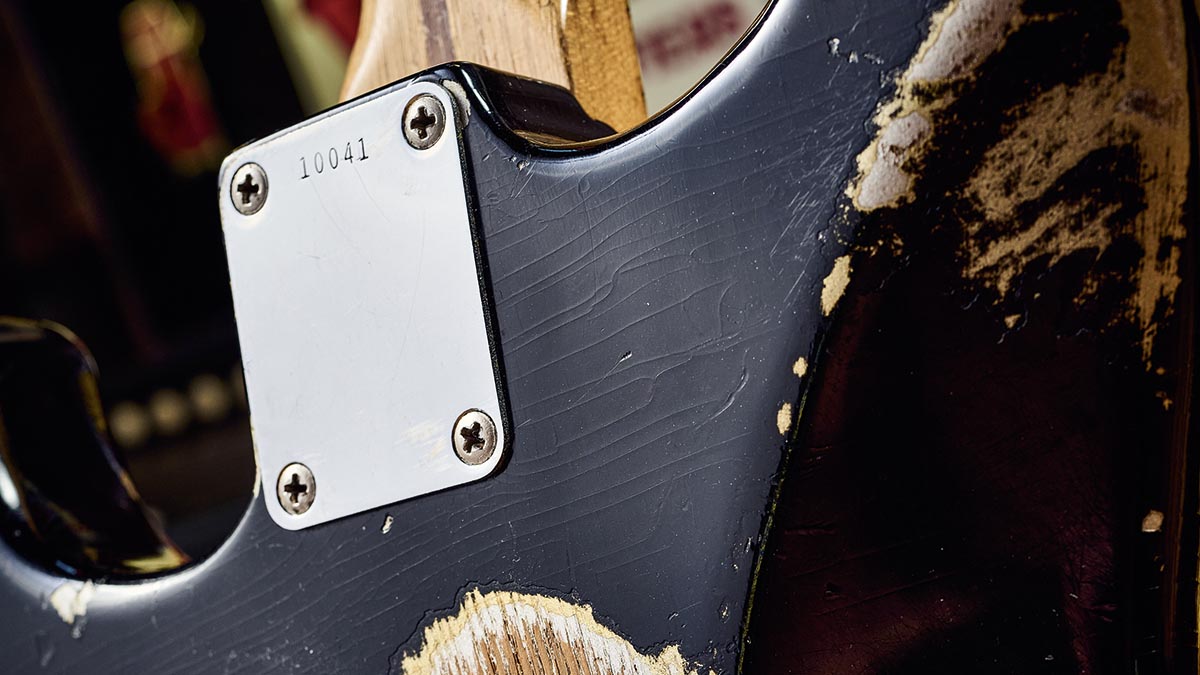
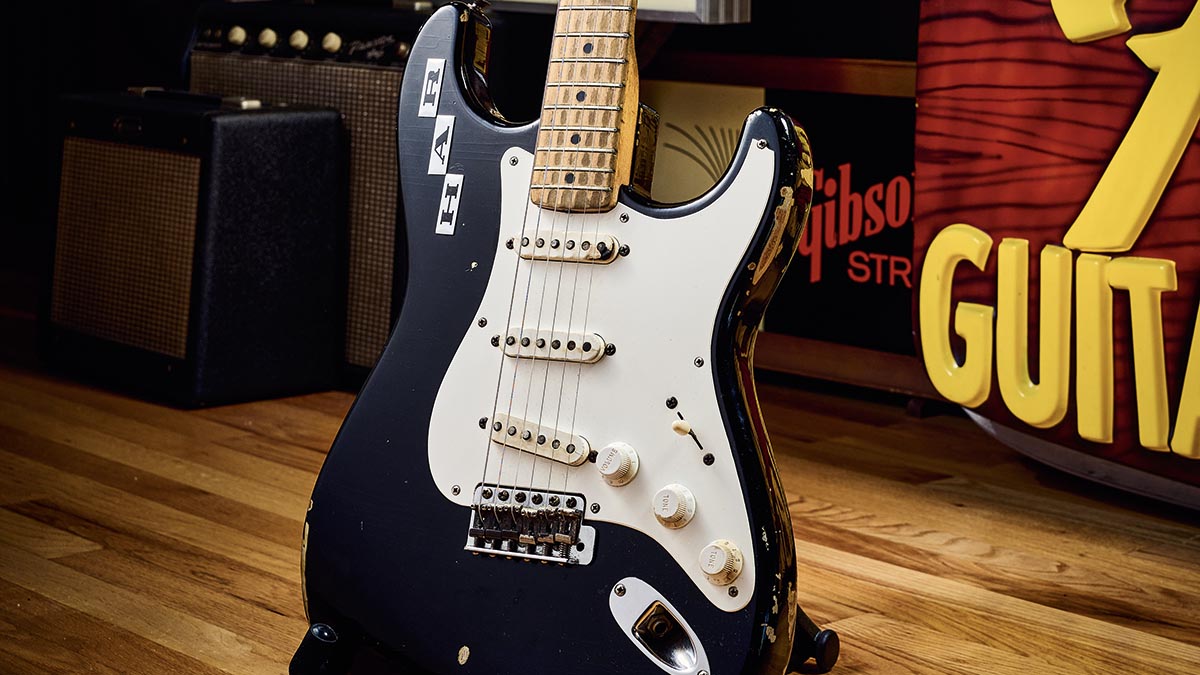
“This is a 1955 Fender Stratocaster, and I will definitively say it’s the first one with a factory black custom colour finish. It was ordered from McCord Music Company in Dallas in 1955 as a black Strat and belonged to Howard A Reed – a guitarist who played a brief stint with Gene Vincent and the Blue Caps. There are three definitive pictures from the late ’50s of Howard Reed playing the guitar.
“At 9lb, it’s heavy, but it ultimately represents my journey in the music business more than any of the guitars I can pull out. It’s one of the most sentimental guitars I own. I had a poster of it on my wall in 1988; it was a Guitar World centrefold and I still have the original poster. I had it tacked on my wall, and I thought it was the coolest Strat on the planet. I never thought that [25] years later I’d be picking it up.”
1941 Martin 000-45
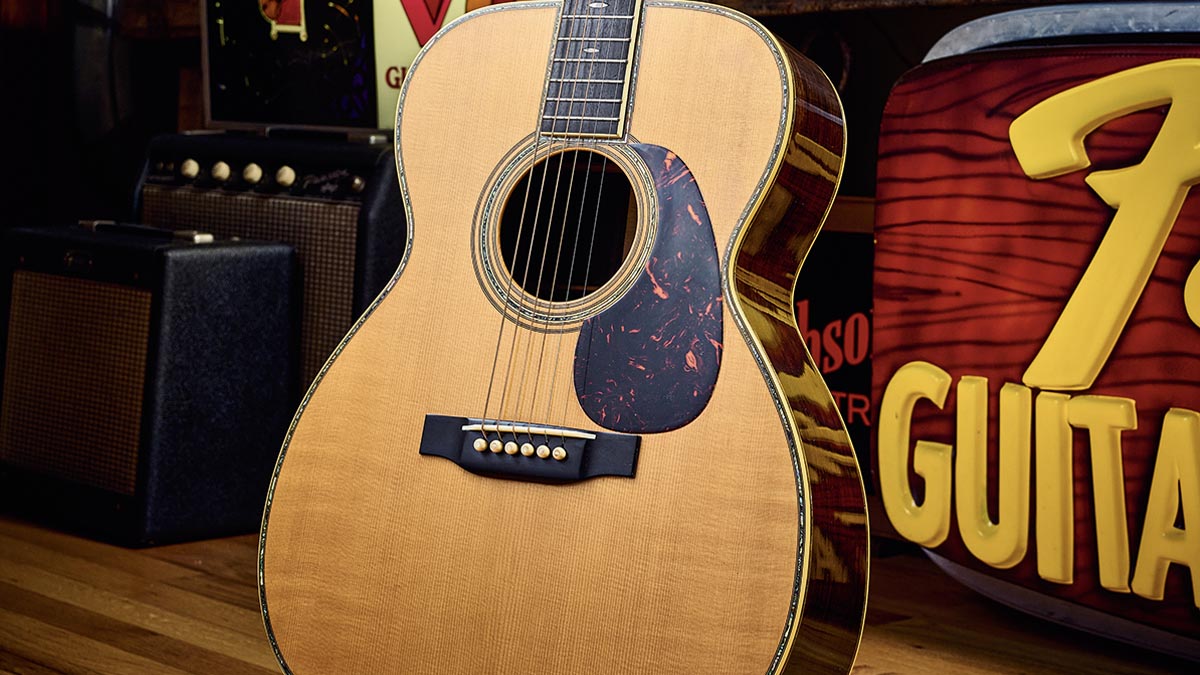
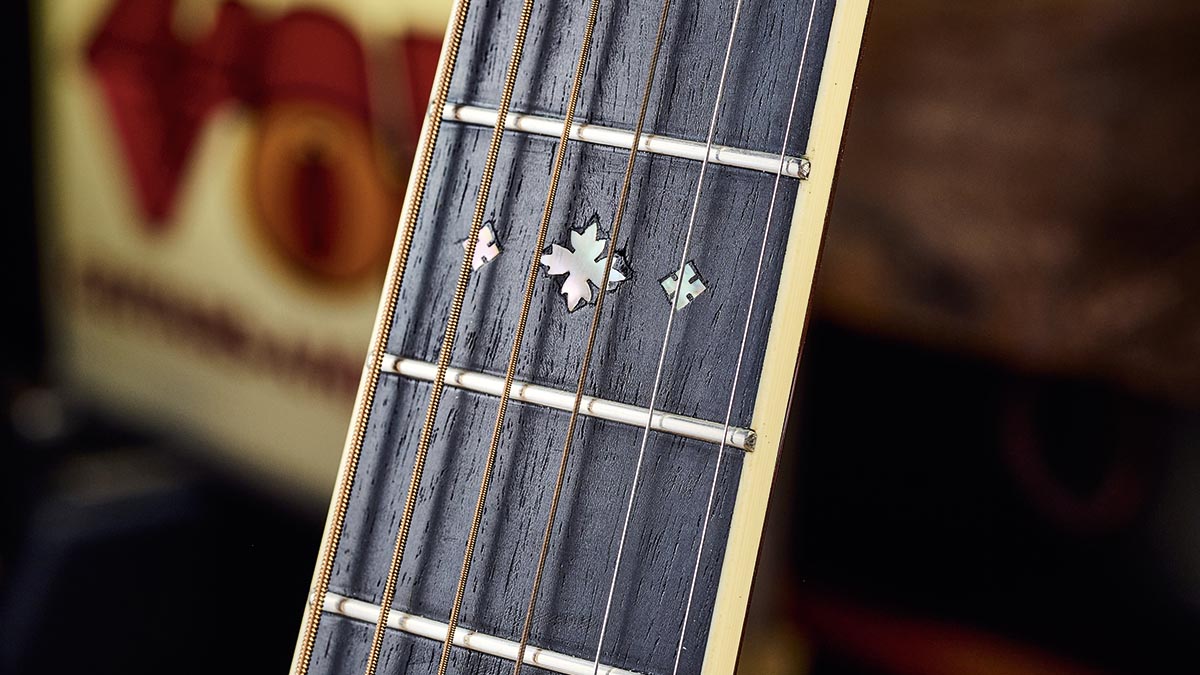
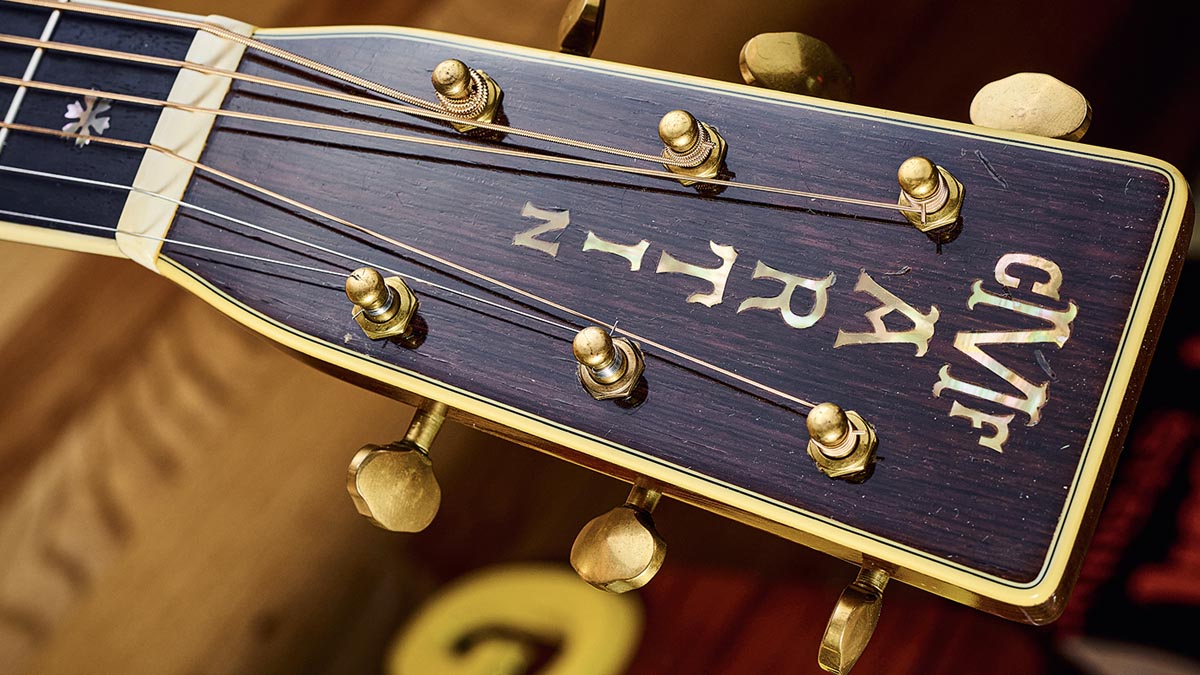
Serial Number: 76993
“There’s an argument about what constitutes a pre-war Martin – your war or our war? – because there’s a two-year difference [between 1939 and 1941 when the US entered World War II]. Now, this guitar is January ’41. Mint condition.
“The guitar has never left Southern California since it arrived from Nazareth, Pennsylvania, where the Martin factory is. It was sold in LA County, East, and ended up in Costa Mesa, Orange County.
“It has the receipt and the original price tag which was $225 – a lot of money in 1941. It belonged to a lady whose husband had passed away and it was once his grandfather’s guitar, so she had inherited it.
“She was about to lose her house, but the money she got from me via Guitar Center ultimately saved the situation. It’s got this beautiful flamed spruce and it’s a museum-grade example of a premium Martin that just happened to come into my life from out of nowhere.”
Gibson Les Paul Models in Copper Iridescent finish
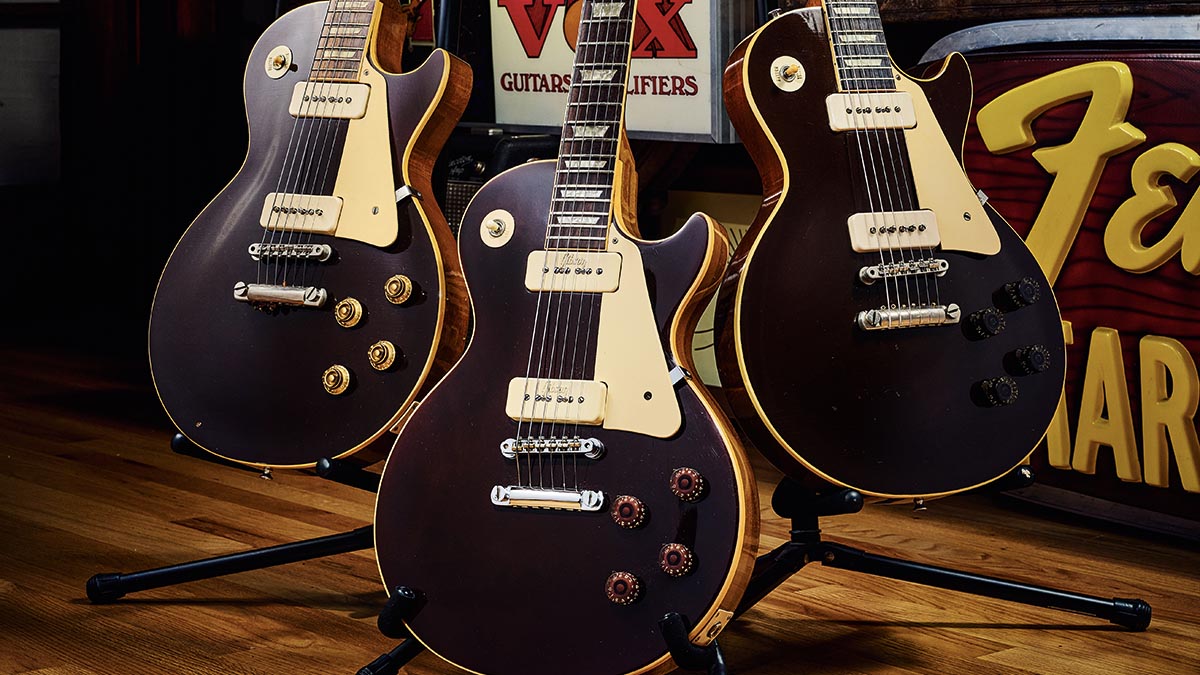
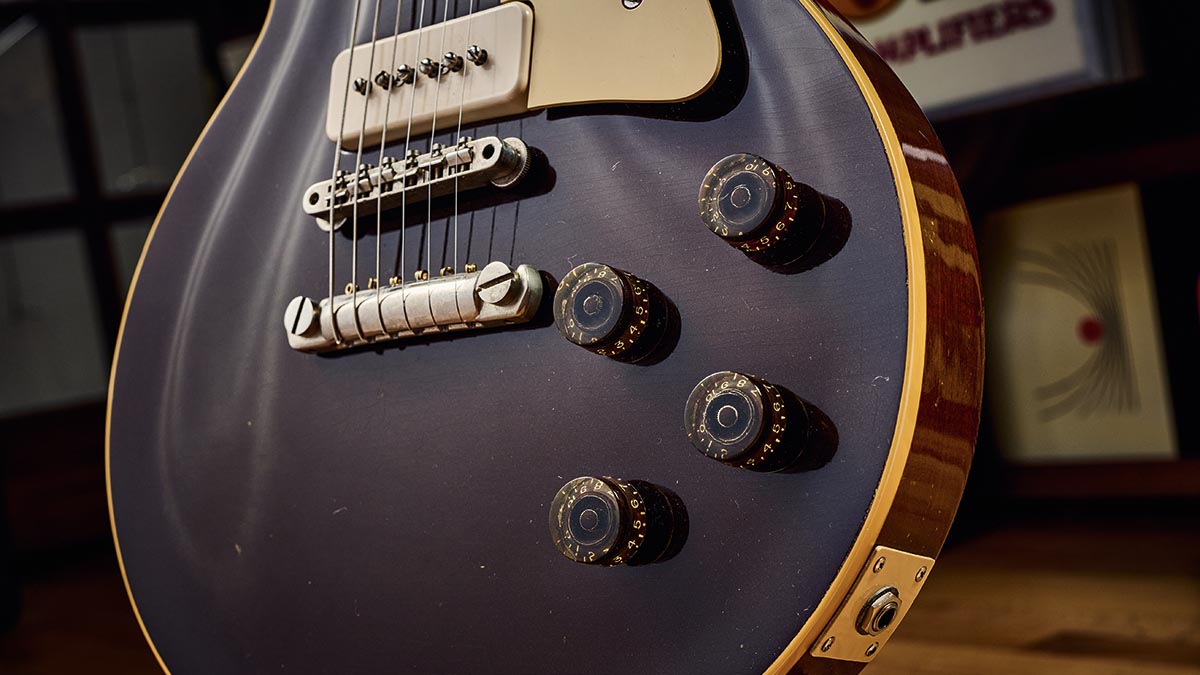
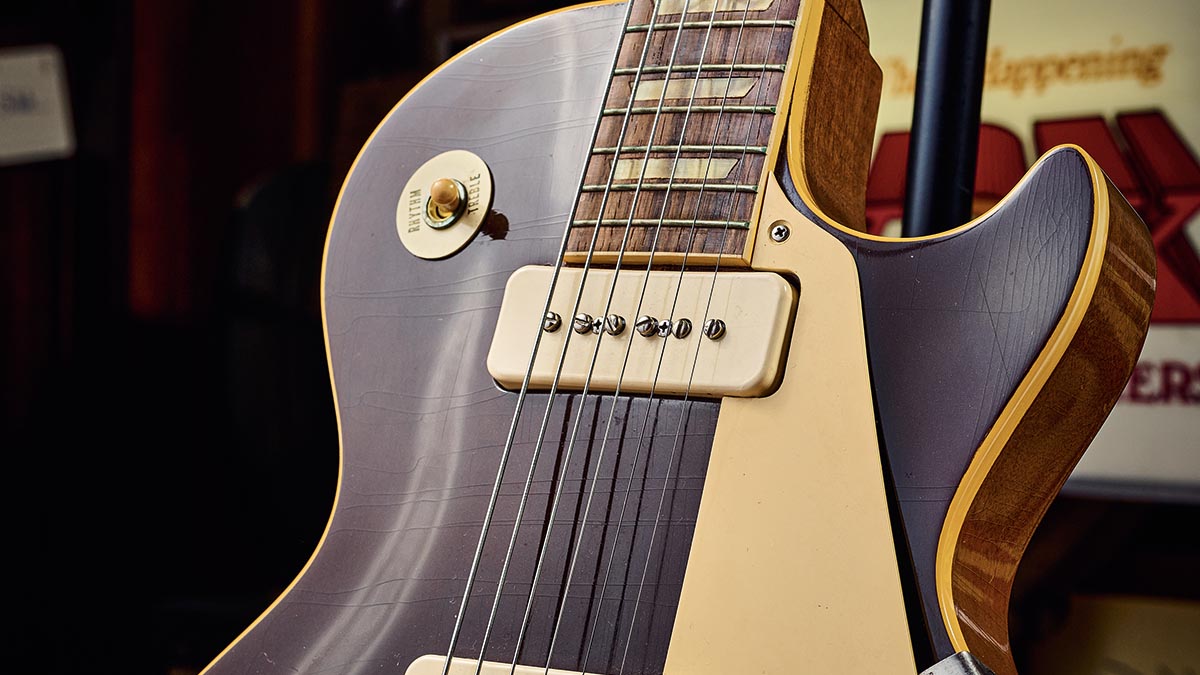
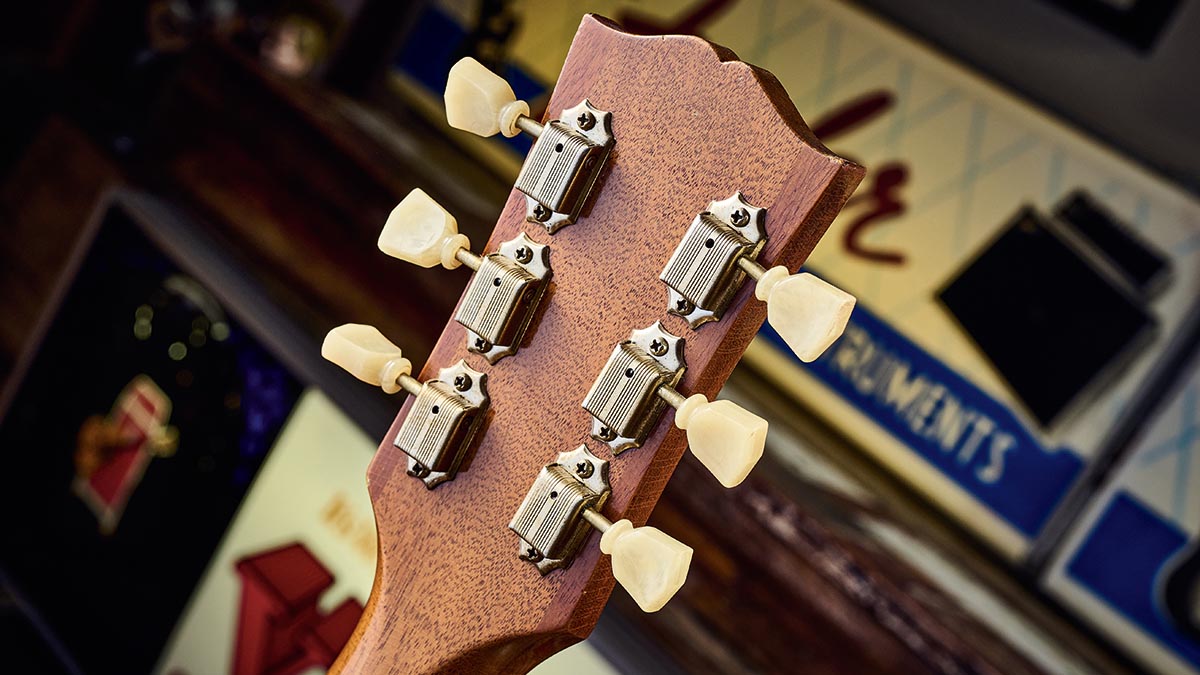
From left: 1955 (serial number 511761); 1972 (serial number 104202); 1955 (no serial number)
“I learned a long time ago in the guitar collecting business never to say you own the only one of anything. I bought the first of these from Gruhn Guitars a long time ago thinking it was the only one. We found it in the [Gibson] ledger and saw it was made for CMI Music in Chicago for a trade show. They made a whole batch in Copper Iridescent, Arctic White, Ebony, Samoan Beige… None of which I know the whereabouts of apart from the Copper one.
“Next thing I know, Trevor and Jay Boone [of Emerald City Guitars] go to the Arizona desert and find another Copper Iridescent ’55. So, now there’s two! Fender made very few custom finishes in the ’50s, Gibson made even fewer.
“It’s unobtanium of the highest order. People will argue, ‘Why won’t you just play it?’ But my job is to preserve history until somebody else can be the custodian. It’s only mint once!”
1950 Fender Broadcaster
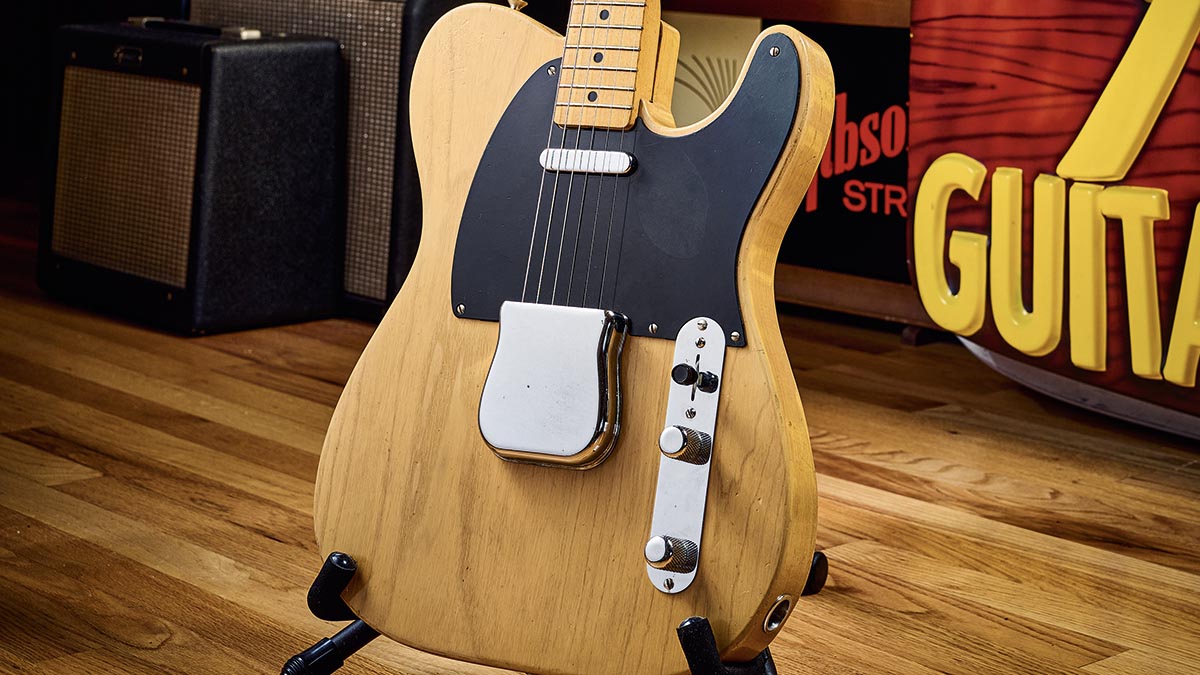
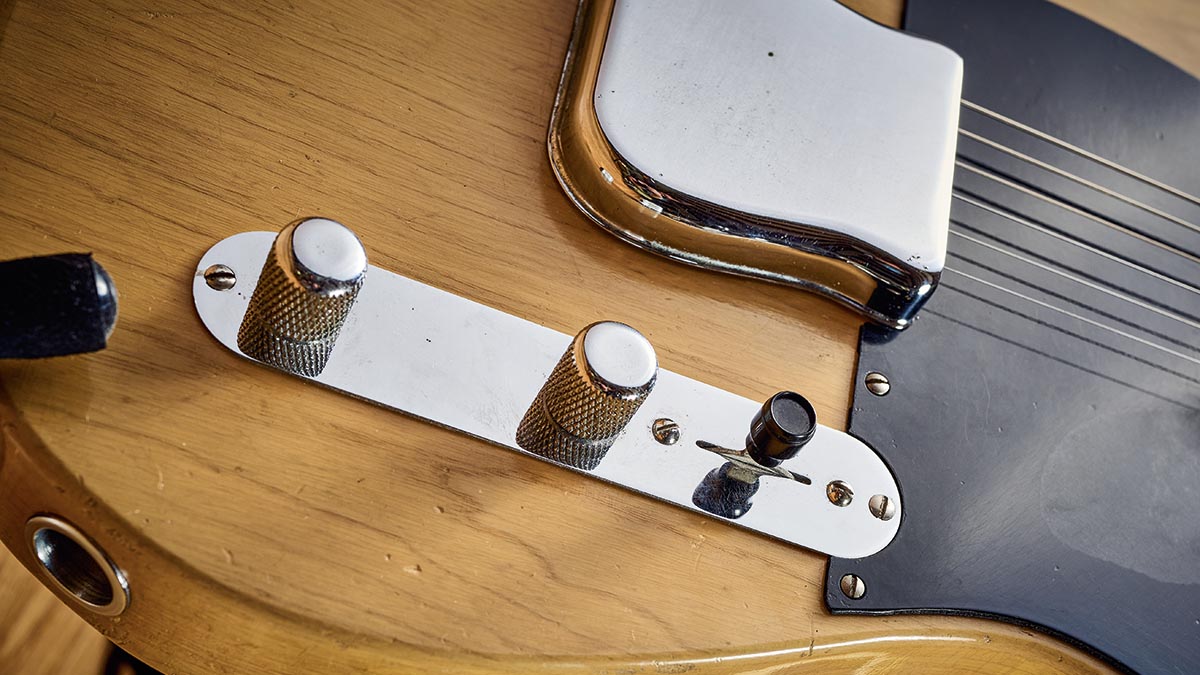



Serial Number: 0640
“Being a 1950, this guitar really goes back to the birth of the electric guitar. Paul Bigsby was ahead of his time and doesn’t get enough credit, but Leo Fender was the first one to mass-produce it. In 1950, the Esquire was first and the Broadcaster was second. And everything that’s come after has been a derivative of that.
“Every music magazine, every guitar book, leads back to 1950 and the Fender Broadcaster. Why do I want a Broadcaster in my guitar collection? Because it’s an historical piece. It’s just pure history. All of this stuff is just as cool and relevant as it was 70-plus years ago.
“This 1950 Fender Broadcaster is in Norm’s book [Norman’s Rare Guitars]. There’s a significant price difference between a 1950 and 1951 Broadcaster, and a Nocaster is worth less than a Broadcaster. But what’s in a name? They just cut the word ‘Broadcaster’ off the logo, hence they’re called ‘clipped logo’ guitars.”
- Blues Deluxe Vol. 2 is out now via J&R Adventures.
Rod Brakes is a music journalist with an expertise in guitars. Having spent many years at the coalface as a guitar dealer and tech, Rod's more recent work as a writer covering artists, industry pros and gear includes contributions for leading publications and websites such as Guitarist, Total Guitar, Guitar World, Guitar Player and MusicRadar in addition to specialist music books, blogs and social media. He is also a lifelong musician.
“It holds its own purely as a playable guitar. It’s really cool for the traveling musician – you can bring it on a flight and it fits beneath the seat”: Why Steve Stevens put his name to a foldable guitar
“Finely tuned instruments with effortless playability and one of the best vibratos there is”: PRS Standard 24 Satin and S2 Standard 24 Satin review


![A black-and-white action shot of Sergeant Thunderhoof perform live: [from left] Mark Sayer, Dan Flitcroft, Jim Camp and Josh Gallop](https://cdn.mos.cms.futurecdn.net/am3UhJbsxAE239XRRZ8zC8.jpg)









